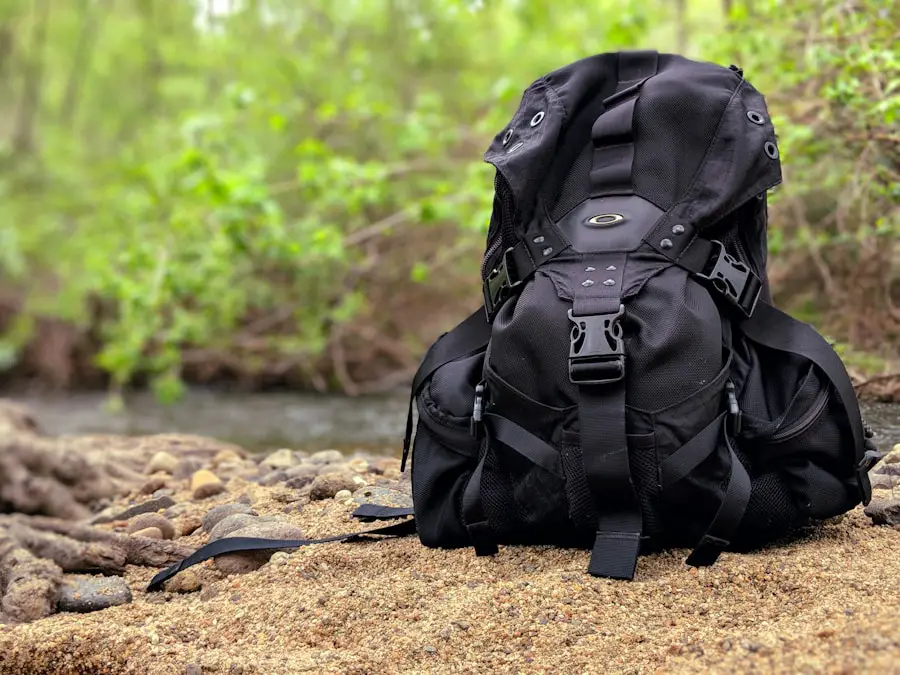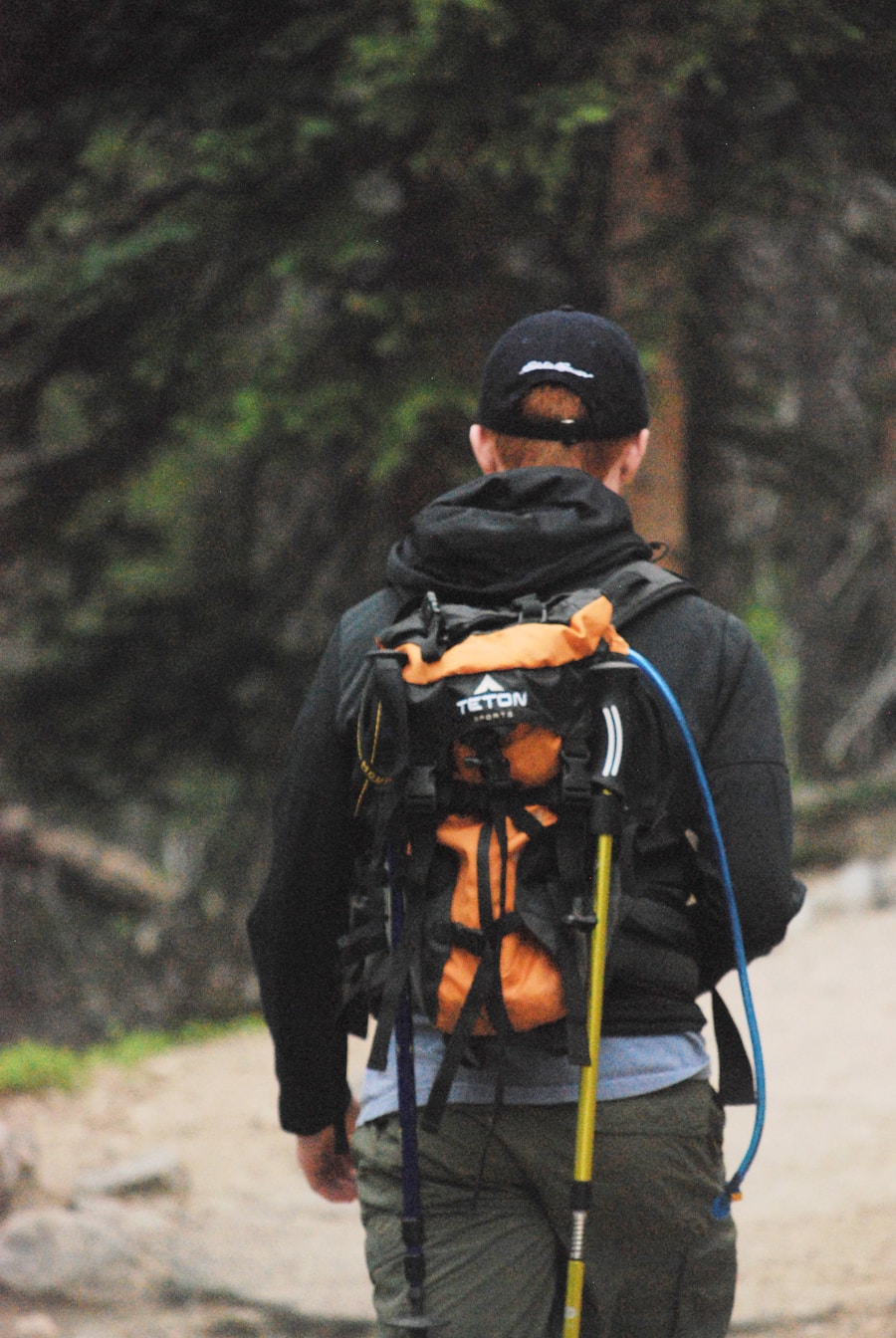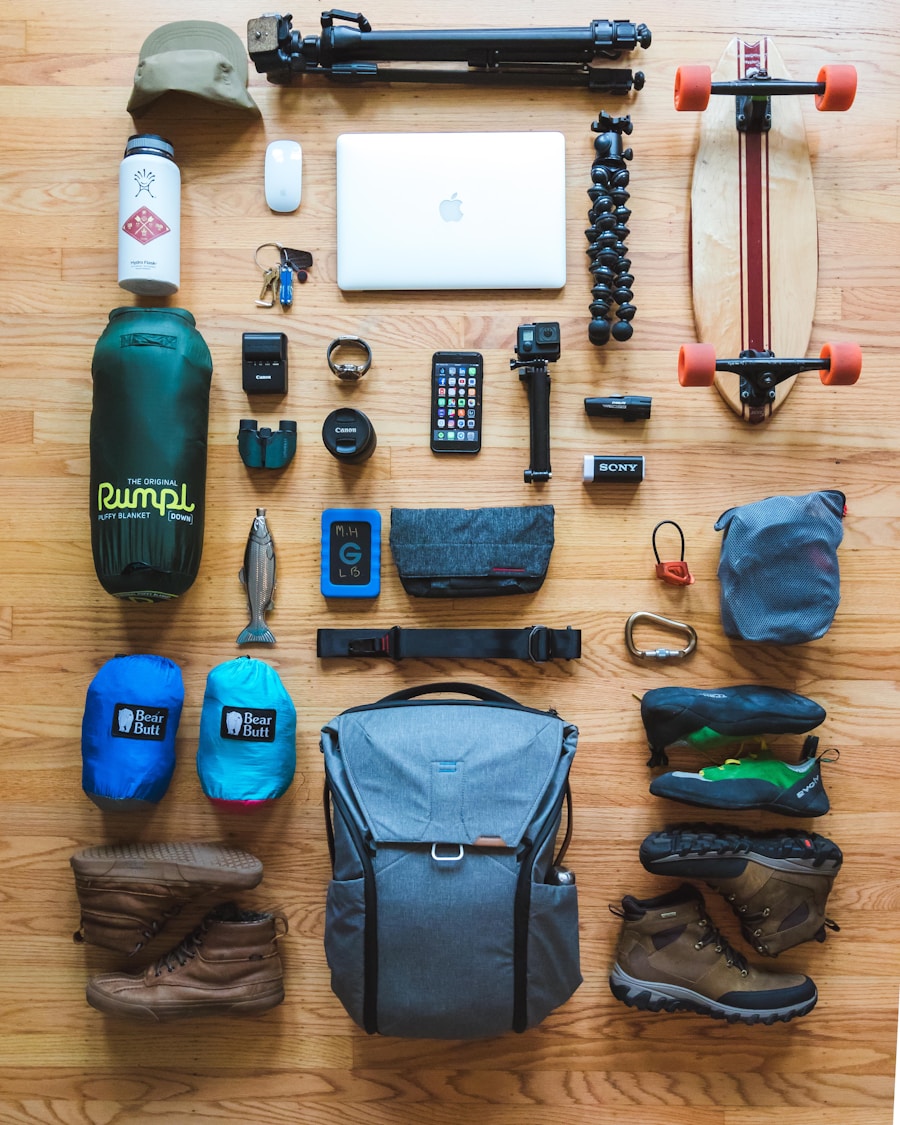Selecting the appropriate backpack for your hiking adventure is a critical decision that can significantly impact your overall experience. The first consideration should be the type of hike you plan to undertake. Day hikes typically require smaller, lighter packs, often ranging from 15 to 30 liters in capacity.
These packs are designed to carry just the essentials, allowing for ease of movement and comfort. Conversely, if you are planning a multi-day trek, you will need a larger backpack, usually between 50 to 70 liters, to accommodate additional gear, food, and sleeping equipment. Understanding the duration and nature of your hike will guide you in choosing a pack that meets your specific needs.
Another important factor to consider is the fit and comfort of the backpack. A well-fitted backpack should sit comfortably on your hips and shoulders, distributing weight evenly to prevent strain during your hike. Look for adjustable straps, padded shoulder harnesses, and hip belts that can be tailored to your body shape.
Additionally, consider the material and design of the backpack; waterproof or water-resistant fabrics are ideal for unpredictable weather conditions, while breathable mesh panels can enhance ventilation on warmer days. Ultimately, trying on various models and sizes while loaded with weight can help you find the perfect balance between comfort and functionality.
Key Takeaways
- Choose a backpack with adjustable straps and proper back support for your hike
- Pack essential items such as water, snacks, map, first aid kit, and sun protection for a day hike
- For multi-day hikes, pack lightweight and compact items, and use packing cubes to organize your backpack
- Distribute weight evenly in your backpack and place heavier items closer to your back for better balance
- Pack high-energy and non-perishable food, and carry a sufficient amount of water for your hike
- Dress in layers and pack gear suitable for various weather conditions, including rain gear and extra insulation
- Include first aid supplies, emergency whistle, and a multi-tool in your backpack for safety
- Properly adjust your backpack straps, hip belt, and sternum strap for a comfortable and secure fit
Essential Items to Pack for a Day Hike
Navigating Unfamiliar Terrain
The essentials typically include tools such as a map and compass or a GPS device, which are crucial for staying oriented in unfamiliar terrain. A fully charged mobile phone can also serve as a backup navigation tool, but it should not be solely relied upon due to potential battery drain or lack of signal in remote areas.
First Aid and Personal Essentials
A first aid kit is indispensable; it should contain band-aids, antiseptic wipes, pain relievers, and any personal medications you may need.
Hydration and Sustenance
Food and hydration are also vital components of your day hike packing list. It’s advisable to bring enough water to stay hydrated throughout your journey—generally, about two liters for a moderate hike. A portable water filter or purification tablets can be beneficial if you plan to refill from natural sources along the trail. For sustenance, opt for lightweight, high-energy snacks such as trail mix, energy bars, or jerky that are easy to consume on the go. Packing a small lunch can also enhance your hiking experience; consider items like sandwiches or wraps that are easy to carry and won’t spoil quickly.
Packing Tips for Multi-Day Hikes

When preparing for a multi-day hike, strategic packing becomes even more crucial due to the extended duration and increased gear requirements. Start by categorizing your items into essential groups: shelter, sleeping gear, cooking supplies, food, clothing, and personal items. This organization will help ensure that you don’t overlook any critical components while also allowing for easier access during your hike.
A lightweight tent or tarp should be prioritized for shelter, along with a compact sleeping bag suited for the expected temperatures. Cooking supplies can vary based on personal preference but generally include a portable stove or cooking system, fuel canisters, and lightweight cookware. It’s wise to pack dehydrated meals that only require boiling water for preparation; these meals are not only lightweight but also provide necessary nutrition without taking up excessive space in your pack.
Additionally, consider packing a small multi-tool or knife that can serve multiple purposes during your hike, from food preparation to gear repairs.
Organizing and Distributing Weight in Your Backpack
| Backpack Weight Distribution | Percentage |
|---|---|
| Books and Notebooks | 40% |
| Laptop and Accessories | 20% |
| Water Bottle and Snacks | 15% |
| Clothing and Personal Items | 15% |
| Other Miscellaneous Items | 10% |
Proper organization and weight distribution within your backpack can greatly enhance your comfort and stability while hiking. The general rule of thumb is to place heavier items closer to your back and centered between your shoulder blades. This positioning helps maintain your center of gravity and reduces strain on your back and shoulders.
For instance, if you’re carrying a tent or cooking gear, these should be positioned near your spine rather than at the bottom of the pack. Utilizing compartments and pockets effectively can also aid in organization. Many backpacks come equipped with various pockets designed for easy access to frequently used items such as snacks, maps, or first aid kits.
Storing these items in external pockets allows you to reach them without having to dig through your entire pack. Additionally, using packing cubes or stuff sacks can help keep similar items together and make it easier to locate what you need quickly.
Packing Food and Water for Your Hike
Food and hydration are paramount when it comes to maintaining energy levels during any hike. For day hikes, lightweight snacks such as granola bars, nuts, dried fruits, or jerky are excellent choices due to their high caloric content and ease of transport. If you’re planning a longer trek, consider packing meals that are both nutritious and easy to prepare.
Dehydrated meals are popular among backpackers because they are lightweight and only require hot water for rehydration. Brands like Mountain House or Backpacker’s Pantry offer a variety of options that cater to different dietary preferences. Water management is equally important; carrying enough water is essential for hydration but can add significant weight to your pack.
A good strategy is to carry a hydration reservoir or bladder that allows for easy sipping while on the move. If you anticipate being near water sources during your hike, consider bringing a portable water filter or purification tablets as a backup plan. This way, you can refill your supply without carrying excessive weight from the start.
Clothing and Gear for Various Weather Conditions

The right clothing and gear can make all the difference in ensuring comfort during your hike regardless of weather conditions. For warm weather hikes, lightweight moisture-wicking fabrics are ideal as they help regulate body temperature by drawing sweat away from the skin. Long-sleeved shirts and pants made from breathable materials can protect against sunburn while also providing some protection against insects.
In contrast, if you’re hiking in cooler or unpredictable weather conditions, layering becomes essential. Start with a moisture-wicking base layer that keeps sweat away from your skin; add an insulating layer such as fleece or down for warmth; and finish with a waterproof and windproof outer layer to shield against rain or wind. Accessories like hats, gloves, and neck gaiters can provide additional warmth without taking up much space in your pack.
Always check the weather forecast before heading out so you can adjust your clothing choices accordingly.
First Aid and Emergency Supplies to Include in Your Backpack
A well-stocked first aid kit is an essential component of any hiking backpack.
At a minimum, it should include adhesive bandages in various sizes for cuts and blisters, antiseptic wipes for cleaning wounds, gauze pads for larger injuries, adhesive tape for securing dressings, and pain relievers such as ibuprofen or acetaminophen. Additionally, consider including items like tweezers for splinter removal and safety pins for securing bandages or slings.Emergency supplies should also be part of your packing list. A whistle can be invaluable for signaling for help if you become lost or injured; it requires no power source and can be heard over long distances. A compact emergency blanket is another useful item; it provides warmth in cold conditions and takes up minimal space in your pack.
Furthermore, including a small flashlight or headlamp with extra batteries ensures you’re prepared for unexpected situations after dark.
Tips for Properly Adjusting and Fitting Your Backpack
Once you have selected your backpack and packed it with all necessary items, adjusting it properly is crucial for comfort during your hike. Begin by loosening all straps before putting on the pack; this allows for easier adjustments once it’s on your back. After slipping on the pack, tighten the hip belt first; it should sit snugly around your hips rather than resting on your lower back.
This adjustment helps transfer most of the weight from your shoulders to your hips. Next, adjust the shoulder straps so that they fit comfortably without pulling too tightly against your shoulders or neck. Ideally, there should be minimal space between the straps and your body while still allowing freedom of movement in your arms.
Finally, adjust any load-lifter straps located near the top of the shoulder straps; these help pull the top of the pack closer to your body for better weight distribution. Taking the time to ensure that your backpack fits correctly will enhance stability and reduce fatigue during long hikes.
If you’re planning a hiking trip, it’s important to pack your backpack efficiently to ensure you have everything you need without weighing yourself down. One helpful article on TakeTravelInfo discusses the best compact binoculars for hiking, which can be a great addition to your gear for enjoying the scenery along the way. Check out the article here for tips on choosing the right pair for your adventure.
Love travel? Join Our Facebook Community
FAQs
What are the essential items to pack for a hiking trip?
Some essential items to pack for a hiking trip include a map and compass, water and water purification system, food and snacks, first aid kit, extra clothing, rain gear, sun protection, and a multi-tool or knife.
How should I distribute the weight in my backpack?
It is important to distribute the weight evenly in your backpack to maintain balance and reduce strain on your back. Heavier items should be packed closer to your back and towards the middle of the pack, while lighter items can be placed towards the outside.
What is the best way to pack a backpack for hiking?
The best way to pack a backpack for hiking is to place heavier items at the bottom of the pack, closer to your back. Lighter items should be packed towards the top and outside of the pack. Keep frequently used items easily accessible and use packing cubes or stuff sacks to organize and compress clothing and gear.
How should I adjust my backpack for a comfortable fit?
To adjust your backpack for a comfortable fit, start by loosening all the straps and putting the pack on. Then, tighten the hip belt first, followed by the shoulder straps, and finally the load lifters. The pack should sit snugly against your back and the weight should be evenly distributed on your hips and shoulders.
What are some tips for packing a backpack efficiently?
Some tips for packing a backpack efficiently include using packing cubes or stuff sacks to organize and compress clothing and gear, packing items that you will need during the day in easily accessible pockets, and using the space inside your backpack wisely by filling any gaps with smaller items.
